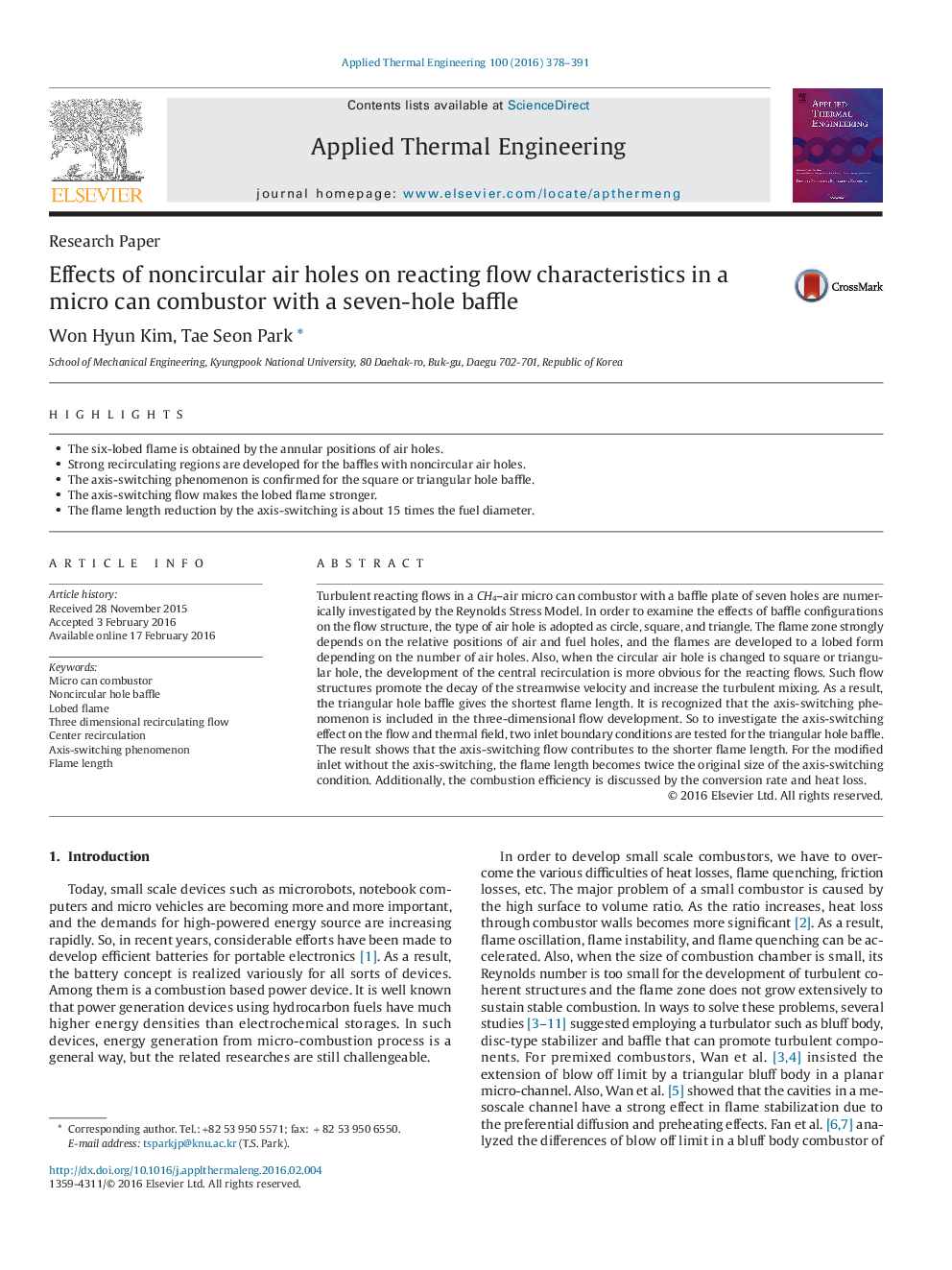| Article ID | Journal | Published Year | Pages | File Type |
|---|---|---|---|---|
| 644876 | Applied Thermal Engineering | 2016 | 14 Pages |
Abstract
Turbulent reacting flows in a CH4-air micro can combustor with a baffle plate of seven holes are numerically investigated by the Reynolds Stress Model. In order to examine the effects of baffle configurations on the flow structure, the type of air hole is adopted as circle, square, and triangle. The flame zone strongly depends on the relative positions of air and fuel holes, and the flames are developed to a lobed form depending on the number of air holes. Also, when the circular air hole is changed to square or triangular hole, the development of the central recirculation is more obvious for the reacting flows. Such flow structures promote the decay of the streamwise velocity and increase the turbulent mixing. As a result, the triangular hole baffle gives the shortest flame length. It is recognized that the axis-switching phenomenon is included in the three-dimensional flow development. So to investigate the axis-switching effect on the flow and thermal field, two inlet boundary conditions are tested for the triangular hole baffle. The result shows that the axis-switching flow contributes to the shorter flame length. For the modified inlet without the axis-switching, the flame length becomes twice the original size of the axis-switching condition. Additionally, the combustion efficiency is discussed by the conversion rate and heat loss.
Keywords
Related Topics
Physical Sciences and Engineering
Chemical Engineering
Fluid Flow and Transfer Processes
Authors
Won Hyun Kim, Tae Seon Park,
